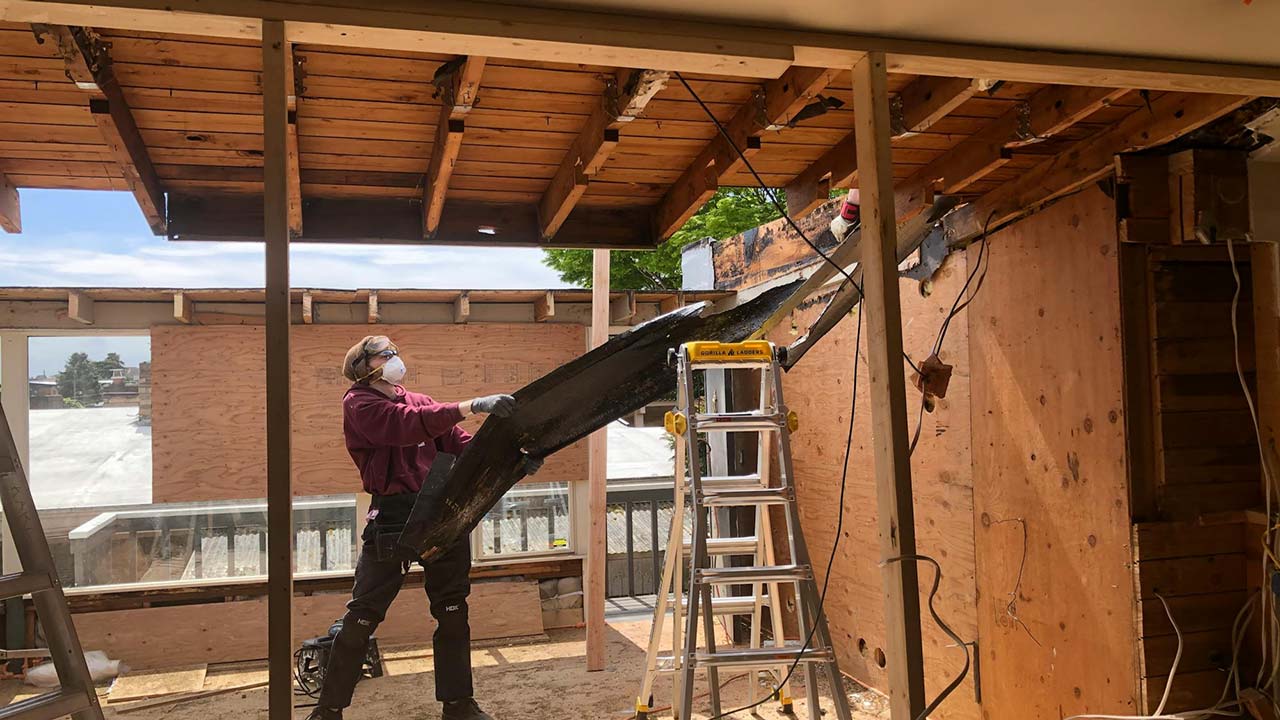Last year, my husband and I joined the growing trend of building a tiny home in our backyard for his aging mother. It was the perfect solution to keep her close while maintaining privacy and independence for all of us.
Tiny homes are gaining popularity for their efficient design and affordability, especially for multigenerational living. However, many considerations, from zoning laws to design choices, can complicate the process. Here’s what we learned from our experience.
Set a Budget and Stick To It

The first thing you need to do when building a tiny home is to set a budget and stick to it. Budgets can be as low as $8,000 and as high as $150,000, depending on how minimal or fancy a place you’re creating. However, average costs range between $30,000 and $60,000.
You must consider labor and supply costs within your budget. Additionally, allot extra time for the project completion, and if you’re remodeling a structure already on your property, factor in any unforeseen expenses.
These issues could include plumbing or electrical issues if you’re tying those utilities into your main home. Padding the project schedule will give you peace of mind and allow extra time for any problems that arise.
Get Multiple Quotes

It is my heartfelt opinion that obtaining multiple quotes from several different contractors and builders is the most critical aspect of building a tiny home. We met with four contractors to review the design, discuss our budget, and evaluate the square footage of our backyard.
They all came back within the same ballpark regarding pricing. So, in order to make an educated decision, we requested testimonials from previous clients. I wanted to ensure we selected the best team for the job. Going with the cheapest isn’t always in your best interest while picking the most expensive isn’t either.
Vetting all contractors goes hand in hand with getting multiple quotes. However, in addition to working with the general contractor (GC) you select, several subcontractors will be responsible for various projects associated with the overall build. From HVAC to concrete and flooring tradespeople and electricians, you’ll need to ensure that your GC hires top-notch workers. Always make sure the contractors are bonded and insured before hiring them (with general liability and workers’ compensation).
Following the project timeline, which outlines when specific tasks are scheduled to be performed, will give you time to get the names and references of the companies to whom the GC is contracting the work. Do not work with contractors who are willing to cut corners.
Compare Costs of Ready-Made ADUs

There are several companies out there nowadays that build make-ready Accessory Dwelling Units, otherwise known as ADUs. These are absolutely wonderful alternatives to building a tiny home from scratch. We compared pricing, stylization, and blueprints from two companies and ultimately went with our own concept built by a contractor.
However, go with the pre-made option if you don’t want to deal with project management, labor shortages, and time constraints and need the project completed quickly. The companies we consulted with offer customization, from paint colors to fixtures.
While you’re comparing the costs of made-ready ADUs, remember to price out supplies–from lumber to tile and paint and everything in between. It’s important to know what supplies cost in order to stay within your budget.
Additionally, not all GCs will be forthcoming with their pricing, so you must have a working knowledge of what is being charged by wholesale suppliers.
Get Coding Permits

Connecting with your city’s coding authority in order to obtain the proper permits needed is a herculean endeavor, especially if you live in a town that is rapidly growing like mine. It can take weeks, if not months, to receive authorization to begin building and to have each task reviewed and signed off before proceeding. Hiring a contractor who understands the proper procedures of getting this done correctly and in a timely manner is vital to your project’s completion.
Ensuring that all the work is permitted correctly and up to code will make your property more desirable when it comes time to resell. Potential buyers want to feel confident about the additional units on the lot. Guaranteeing the work performed allows you, as the seller, to get top dollar for your property.
Do Not Pay Upfront

When signing the contract with the general contractor, make sure that the fee schedule doesn’t require you to pay for the work upfront. Unfortunately, it’s not uncommon for GCs to walk out on a job, leaving you in a bind. In our situation, we agreed to a weekly or per-project payment timeline.
This allowed us to manage our payments effectively and ensure that we were only paying for completed work. I broke the project down into sections, including when tasks would be completed. Based on this format, we cut a check to the GC when that particular step of the project was completed.
If the GC is rightly bonded and insured and quits in the middle of a job, I recommend filing a claim against the contractor’s bond, as the contractor may not be collectible. You can locate bond information on the contractor’s profile through the Contractors State License Board. Many recommend that contractors obtain bonds and insurance, but not all states require it.
Some contractors require a deposit or a partial payment upfront to get the ball rolling. In cases like this, trust your evaluation and vetting process to help guide you in deciding what’s in your best interest.
The Most Important Lesson We Learned

Although we are pleased with the overall result of our tiny home project, there are some things we would have done differently.
The number one thing is that we would have contracted with a company that makes ready-made ADUs rather than building a tiny home from the ground up.
The companies we got quotes from were several thousand dollars more expensive, but we would have saved money in the long run. Building from scratch due to supply chain issues and labor shortages in our state pushed us over budget and significantly extended the project’s timeline. Choosing a pre-made ADU could have potentially saved us from these additional costs and delays.
Because we chose to build a new unit, I would have either invested in software better equipped for construction project management rather than using Excel and TaskRay or hired someone to oversee the project. I didn’t check the wholesale pricing of all supplies initially, which was a mistake, and that’s why I included that suggestion.
As long as you are informed about your tiny home-building project, you will have a great experience.




